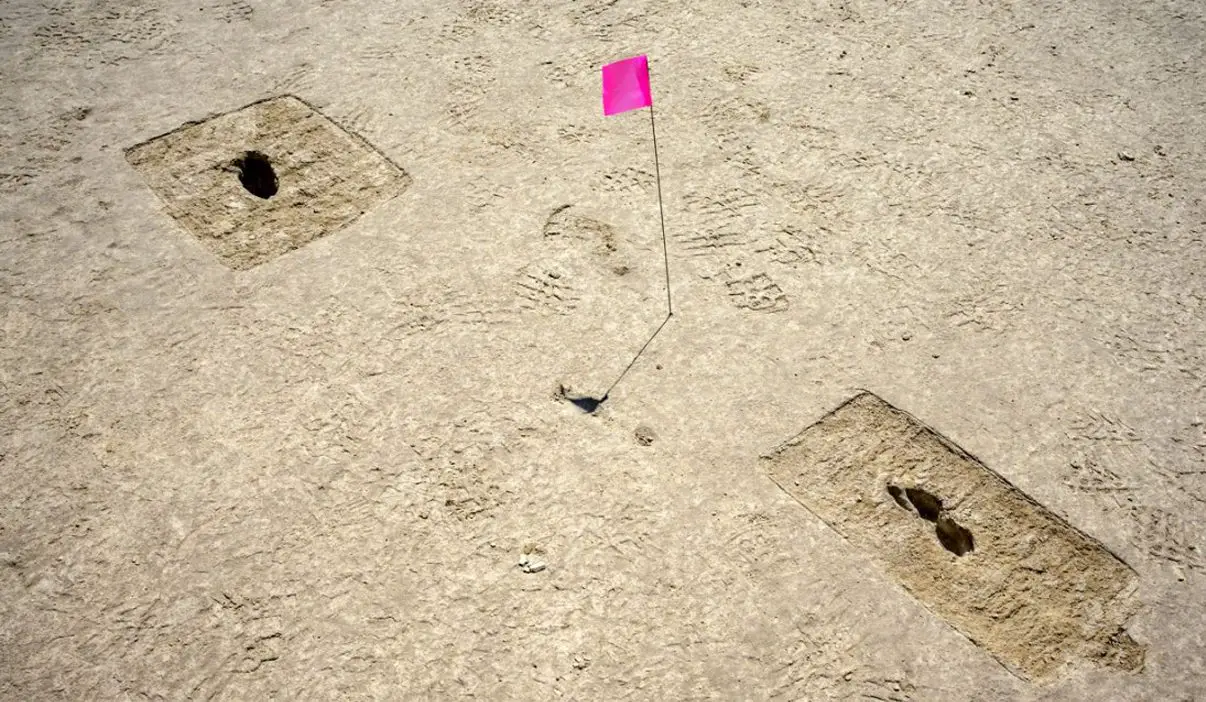Ghost tracks found in salt flats have been identified as prehistoric footprints from the last ice age.
Ghost tracks appear for a short time when moisture conditions are just right. The tracks were discovered by researchers from Cornell University whilst driving from an archaeological site in the Air Force’s Utah Testing and Training Range (UTTR), located in the United States.
Whilst documenting the prints, the researchers applied a 5,000-acre archaeological survey and a pilot study on the use of non-invasive archaeological techniques, including use of a magnetometer and ground penetrating radar, or GPR.
This study revealed many more invisible prints, with 88 footprints so far being discovered. Initial studies suggest that they were made by a mixture of adults and children during the Pleistocene, the geological epoch that lasted from about 2,580,000 to 11,700 years ago.
Daron Duke, of Far Western Anthropological Research Group said: “Based on excavations of several prints, we’ve found evidence of adults with children from about five to 12 years of age.”
“We have also collected the infill of the prints to see if we can find organic materials to radiocarbon date” added Duke.
Since there haven’t been any wetland conditions in at least 10,000 years that could have produced such footprint trails in this remote area of the Great Salt Lake desert, the prints are likely more than 12,000 years old.
The “Trackway Site” as it is now called, complements recent discoveries made nearby at the Wishbone Site. The sites are located within a half mile of each other in what would have been a large wetland, now referred to by scientists as the Old River Bed Delta.
Header Image Credit : R. Nial Bradshaw





